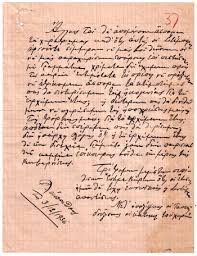
Trevor Todd and Jackson Todd have over sixty combined years of experience in resolving estate disputes, including the interpretation of ambiguous wills
Anderson v O’Brien 2025 BCSC 200 is a post WESA that deals with the legal principles utilized by the court in interpreting the wording of the will.
In the Anderson case there is an ambiguity to do with a $40,000 bequest to care for the deceased’s animals that was given to two persons. The words, “or if they both die before me” gave rise to a dispute between the parties. “
The court found that the words “or if they both die before me”, when viewed in the context of the surrounding circumstances, demonstrated a deliberate choice by the deceased to create a non-conditional gift. Accordingly, despite the fact that the dogs did not survive the deceased, the court found that the gift did not lapse and that the plaintiff was entitled to be paid the $40,000 legacy.
The Legal Framework
The principles that apply when a Court is asked to interpret a will were conveniently set out by Justice Burke in Vopicka v. Vopicka Estate, 2017 BCSC 2197 at paras. 12-13:
[12] While there have been somewhat different approaches utilized by the BC Court of Appeal as to when the courts can look beyond the will itself to ascertain the intention of the testator, as noted recently in Killam v. Killam, 2017 BCSC 175, at para. 60, the starting point for any analysis is the language of the will. The court then looks to the surrounding circumstances existing at the time the testator made the will.
[13] A succinct summary of the principles to be applied in interpreting the will are set out in Dice v. Dice Estate, 2012 ONCA 468 [Dice], at paras. 36-38:
[36] The parties agree on the proper approach to the interpretation of a will. First, and foremost, the court must determine the intention of the testator when he made his will. The golden rule in interpreting wills is to give effect to the testator’s intention as ascertained from the language that was used: National Trust Co. Ltd. v. Fleury, [1965] S.C.R. 817 at p. 829; Brown Estate (Re), [1934] S.C.R. 324, at p. 330; Singer v. Singer, [1932] S.C.R. 44, at p. 49. Underlying this approach is an attempt to ascertain the testator’s intention, having regard to the will as a whole.
[37] Where the testator’s intention cannot be ascertained from the plain meaning of the language that was used, the court may consider the surrounding circumstances known to the testator when he made his will – the so-called “armchair rule”: Re Burke, [1960] O.R. 26 (C.A.), at p. 30; Re Shamas, [1967] 2 O.R. 275 (C.A.), at p.279, citing Perrin v. Morgan, [1943] A.C. 399 (U.K. H.L.), at pp. 420-21.
[38] Under this rule, the court sits in the place of the testator, assumes the same knowledge the testator had of the extent of his assets, the size and makeup of his family, and his relationship to its members, so far as these things can be ascertained from the evidence presented. The purpose of this exercise is to put the court in, as close as possible to, the same position of the testator when make his last will and testament.
At para. 13 of Killam v. Killam, 2018 BCCA 64 [Killam BCCA], the British Columbia Court of Appeal acknowledged that the Courts have recognized two approaches to determining a will-maker’s intention:
[13] The “four corners” approach provides that the intention of the testator is to be gleaned from the will itself, and surrounding circumstances are only to be taken into account if the testator’s intention cannot be established from the will. The “armchair” approach requires the court to put itself in the position of the testator at the time the testamentary document was written and to consider the contemporaneous surrounding circumstances in order to ascertain the subjective intentions of the testator. Implicit in the “four corners” approach is recourse to the “armchair” approach if the testator’s intent cannot be made out from the text of the will alone.
At paras. 51-52 of Killam BCCA, the Court of Appeal endorsed Justice Blok’s conclusion below, confirming that the “ultimate question in constructing a testamentary document is to determine the testator’s intention, and… the appropriate “starting point” is the language of the will” (at para. 52). The goal is to ascertain the actual meaning the will-maker ascribed to the words used, as opposed to what the will-maker may have meant to do: Thiemer Estate v. Schlappner, 2012 BCSC 629 at paras. 46-
48. If the Deceased’s intention cannot be discerned from the language of the Will itself, such that extrinsic evidence may be needed, s. 4(2) of the Wills, Estates and Succession Act, S.B.C. 2009, c. 13 [WESA] limits the admissibility of such evidence (see Roberts Estate (Re), 2021 BCSC 1732 at para. 8):




